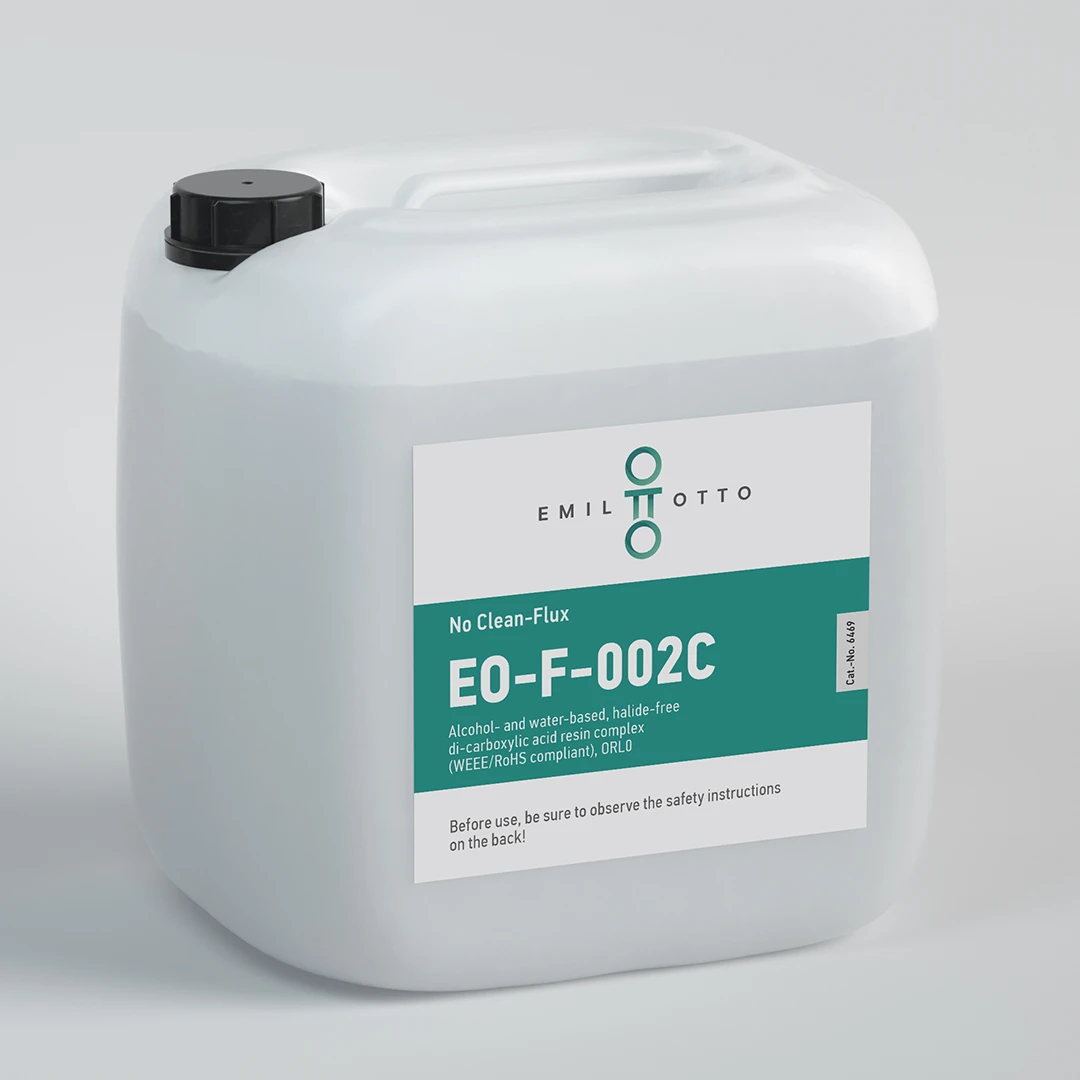Description
EO-F-002C is a No Clean-Flux and was specially developed for wave, selective, dip and hand soldering processes as well as strand tinning. It can be applied using all standard application methods including foam fluxing.
In practice, it has been shown that when used properly, washing of PCBs soldered with this flux can be largely dispensed with. IC testing with needle adapters is generally not impaired
The solids content is 4 %. EO-F-002C is classified as a "non-corrosive" flux.

